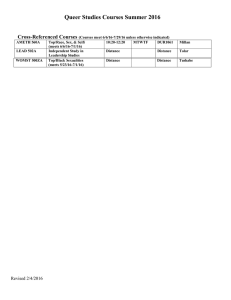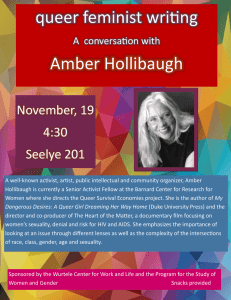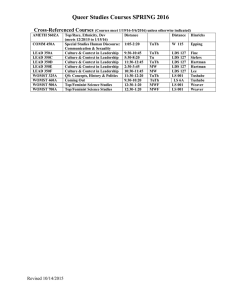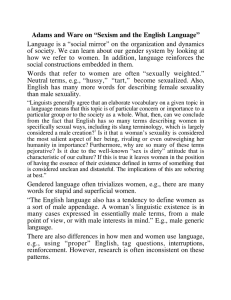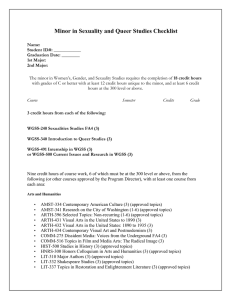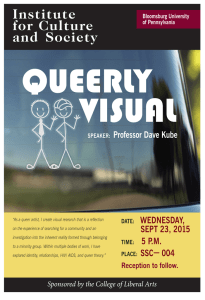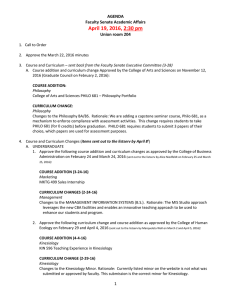Queer Studies Courses FALL 2016 Cross-Referenced Courses
advertisement
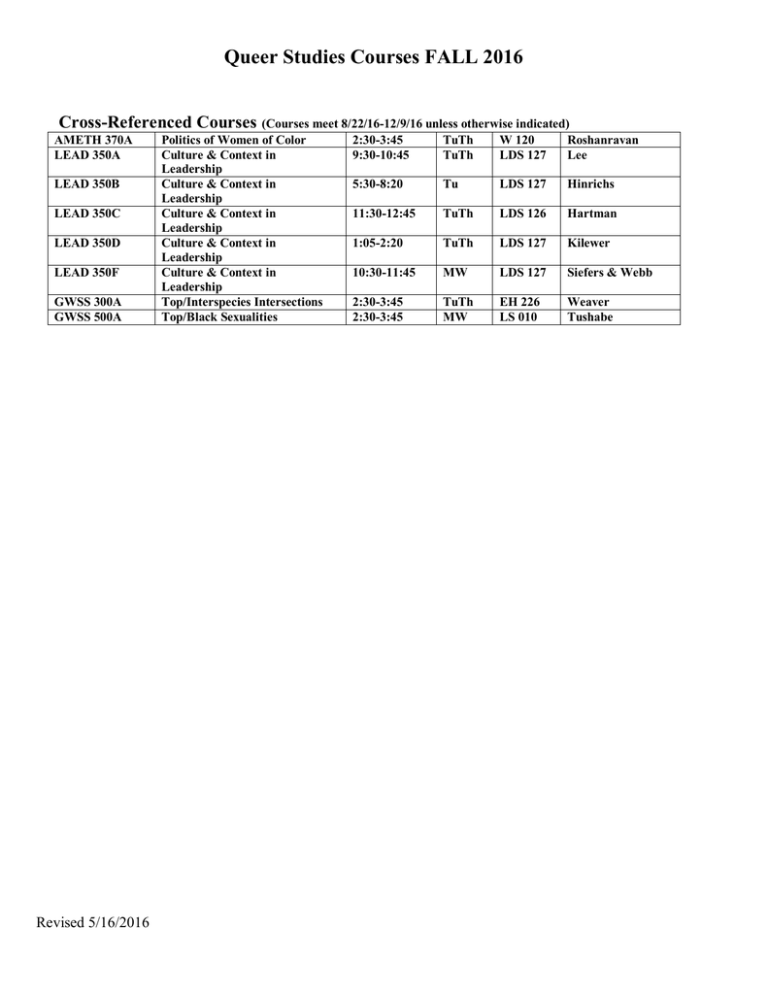
Queer Studies Courses FALL 2016 Cross-Referenced Courses (Courses meet 8/22/16-12/9/16 unless otherwise indicated) AMETH 370A LEAD 350A LEAD 350B LEAD 350C LEAD 350D LEAD 350F GWSS 300A GWSS 500A Revised 5/16/2016 Politics of Women of Color Culture & Context in Leadership Culture & Context in Leadership Culture & Context in Leadership Culture & Context in Leadership Culture & Context in Leadership Top/Interspecies Intersections Top/Black Sexualities 2:30-3:45 9:30-10:45 TuTh TuTh W 120 LDS 127 Roshanravan Lee 5:30-8:20 Tu LDS 127 Hinrichs 11:30-12:45 TuTh LDS 126 Hartman 1:05-2:20 TuTh LDS 127 Kilewer 10:30-11:45 MW LDS 127 Siefers & Webb 2:30-3:45 2:30-3:45 TuTh MW EH 226 LS 010 Weaver Tushabe Queer Studies Course Descriptions Fall 2016 WOMST 300 Top/Interspecies Intersection Section A: TuTh 2:30 –H. Weaver “Interspecies Intersections” explores how relationships between humans and animals not only reflect but also shape experiences of race, gender, sexuality, species, breed, and nation. By examining events such as Hurricane Katrina and NFL quarterback Michael Vick’s conviction, the roles of animals and plants in histories of colonization, as well as more contemporary popular internet memes of “unlikely friendships” between, say, elephants and dogs, we work through co-evolutions of humans, plants, and other animals across species lines. In addition to the above, some of the topics we address include the following: what does it mean to extend Kimberlé Crenshaw’s writings on “intersectionality” to human/animal relationships? How does the development of scientific understandings of “species” involve histories of sexuality and race and fears about miscegenation in the U.S.? What do contemporary dialogues around “animal hoarding” have to do with gender and race? What does it mean to think about animals through the lens of queer theories? WOMST 500 Black Sexualities Section A: MWF 9:30;--Tushabe This course investigates the intersection of race, gender, and sexuality. The course will explore complex relations among identity categories such as lesbian, gay, bisexuality, and transgender in relation to class, gender, ethnicity, religion, and nationality. The course will be divided into three central parts: the sexualization of race and the racialization of sexuality; sociocultural perspectives on race and sexuality; and queering the Color Line and histories of oppression, including colonialism. We will read some of the most influential authors in Gender Theory, Queer Theory, Race Theory, Sexuality Studies, and Transgender studies. Revised 5/16/2016
